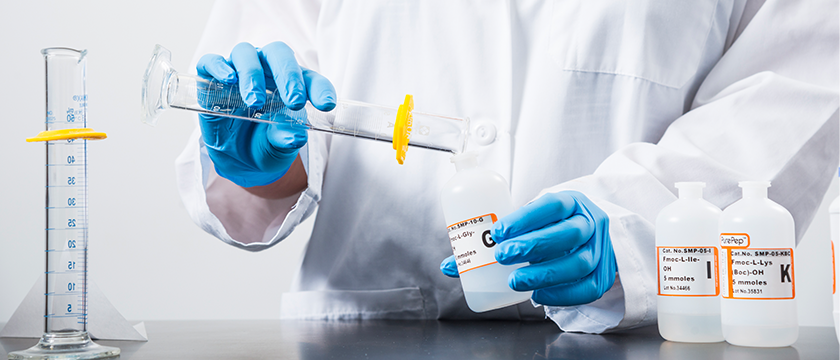Green Chemistry: healthier chemists with every peptide synthesized

As solid phase peptide synthesis (SPPS) typically uses an excess of reagents to drive the completion of these reactions, there is a need for the use of a large amount of solvents, most of which are hazardous. In fact, solvents make up the major component of the reaction mixture representing 80−90% of the nonaqueous mass, as concluded in a survey by GSK in 2007 about the materials used for the manufacturing of active pharmaceutical ingredients (APIs). Benzotriazols (and variants) are frequently used as coupling agents for peptide syntheses in the pharmaceutical industry. However, their safety profile must be carefully considered as these compounds display explosive properties, when heated under defined confinement or when subjected to mechanical stimulus that leads to restrictions for their shipping and handling. In addition, a variety of allergic responses have been reported from exposure to some coupling agents. Moreover, residues of the starting material 1-Chloro-2-nitrobenzene and hydrazine, used for the synthesis of bezotriazol moieties are known to have toxic effects, even at parts per billion (ppb) levels. For example, irritating effects on the mucous membrane, as well as skin irritation, have been reported when exposed to the dust of HOBt.
Taking into consideration the hazardous potential of the essential benzotriazole-based coupling reagents, our partner Luxembourg Biotechnologies Ltd. decided to reduce the environmental and health impact of these chemicals by developing compounds that are safer yet achieve comparable results as HOBt. With these compounds we move towards our goals to create a healthy and safe working environment and achieve a zero-disaster risk that is implemented in local policies, training, lab goal setting, and performance evaluation.